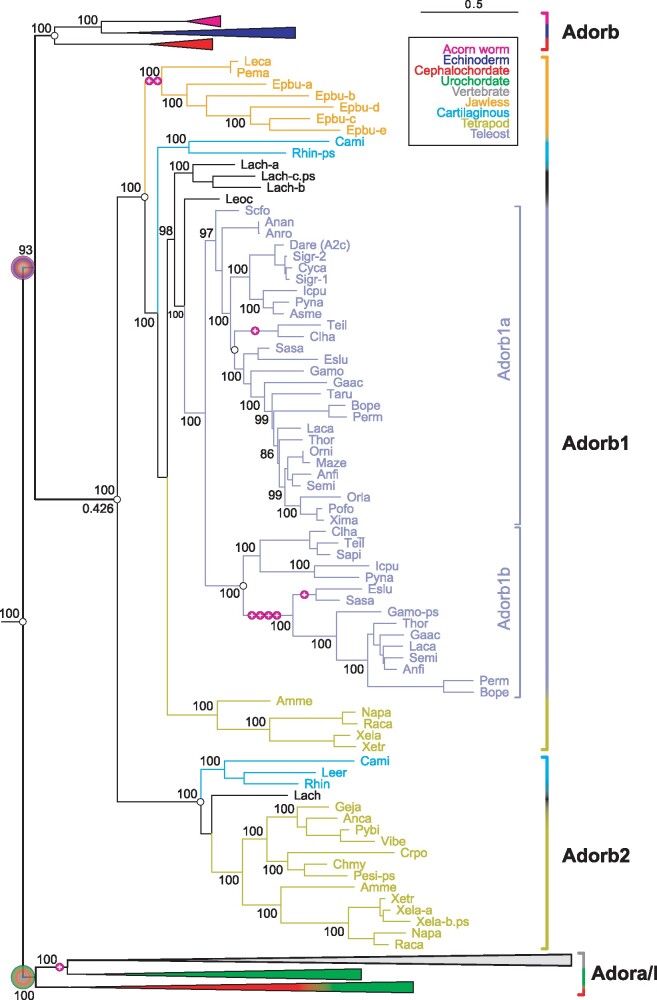Fig. 2
Evolution of the adorb gene clade in vertebrates. Maximum likelihood tree for adora, adorb, and related receptors, same tree file as figure 1, only vertebrate adorb clade expanded here. Branch support is given in %, for the root of the adorb clade also the common branch length is given (0.426); scale bar denotes number of amino acid substitutions per site. Species groups are color-coded as indicated, all nonvertebrate nodes and the vertebrate adora node are collapsed. Magenta circles with plus sign indicate intron gains; small empty circles denote absence of introns. Gene clades are visualized by angular parantheses, color-coded according to the species represented in that clade. Species are indicated by four letter abbreviation, for full names see supplementary file 3, Supplementary Material online. The outgroup (not shown) consists of over 100 genes encompassing all subgroups of rhodopsin class GPCRs as well as rhodopsin-associated class genes (see supplementary file 3, Supplementary Material online). The root of the adora and adorb clade is denoted by large circles, color-coded according to species represented within that clade. The vertebrate adorb clade is well separated with maximum branch support. Coelacanth (Lach) and hagfish (Epbu) show small gene expansions, the remaining increases in gene number result from two whole genome duplications or polyploidy (Sigr, Xela).

